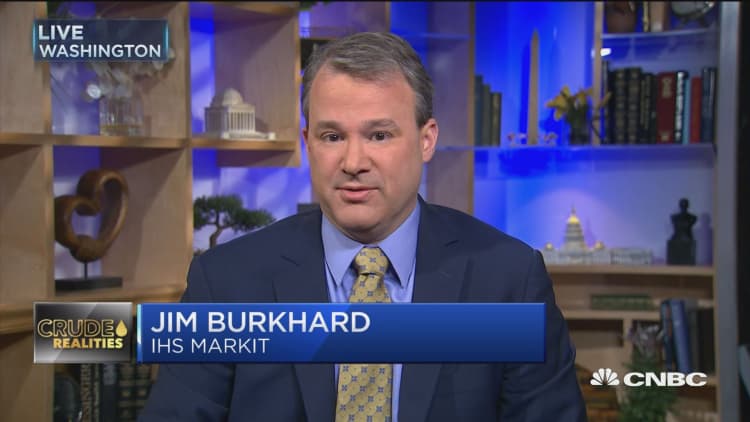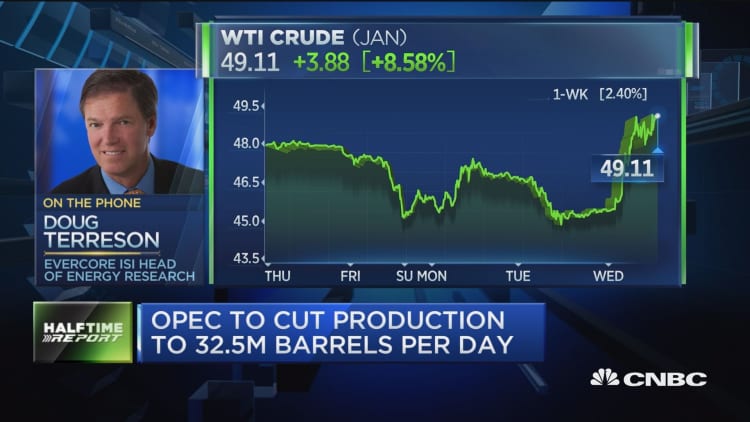
Oil prices surged as much as 5 percent on Thursday, with Brent crude at its highest in about 16 months, extending gains after OPEC and Russia agreed to restrict output to reduce the global supply glut more quickly.
The Organization of the Petroleum Exporting Countries agreed on Wednesday to its first oil output reduction since 2008 after de-facto leader Saudi Arabia accepted "a big hit" and dropped a demand that arch-rival Iran also slash output.
The deal also included the group's first coordinated action with non-OPEC member Russia in 15 years. On Thursday, Azerbaijan said it was also willing to engage in talks on cuts.
Doubts about the historic deal were widespread in the market.

"It remains to be seen how well they stick to the plan, but if OPEC hadn't come to an agreement the probability is that oil prices would have fallen to $40 a barrel, perhaps even lower," said Simon Flowers, chief analyst at consultancy Wood Mackenzie.
"Brent was trading at about $50 a barrel after the announcement, and we expect it to trade at an average of $55-$60 per barrel in 2017."
Benchmark Brent crude for February was up $2.13, or 4.1 percent, at $53.97 a barrel by 2:43 p.m. ET (1943 GMT), after hitting its highest level since July 27, 2015. On Wednesday, the expired January Brent contract ended up 8.8 percent at $50.47.
U.S. light crude oil settled up $1.62, or 3.3 percent, to $51.06 a barrel. It earlier rose to $51.80, testing a 2016 high of $51.93. The contract ended Wednesday's session up 9.3 percent.
U.S. refined products also rose along with crude. Ultra low sulfur diesel (ULSD) futures soared as much as 5.5 percent to its highest in more than a year while gasoline futures jumped as much as 6 percent.
The OPEC deal triggered frenzied trading, with Brent futures hitting record trading volumes for February and March, when the supply cuts should start to be visible in the market.

The Intercontinental Exchange Inc also said ICE Brent crude futures hit a daily volume record of 1.96 million contracts on Wednesday.
Even after Thursday's steep rise, oil prices remained about half their mid-2014 levels, when prices began to collapse to the lowest in a generation.
OPEC produces a third of global oil, or around 33.6 million bpd, and the deal aims to reduce output by 1.2 million bpd from January 2017, similar to January 2016 levels, when prices fell to 10-year lows amid ballooning oversupply.
"We do not believe that oil prices can sustainably remain above $55 per barrel, with global production responding first and foremost in the U.S.," Goldman Sachs said.
The head of the International Energy Agency Fatih Birol warned of greater volatility after the OPEC deal.
"Unlike in the past OPEC decisions, if prices move to around $60, a substantial amount of oil in United states is ready to come to the markets," Birol said.
Coinciding with the OPEC cuts, supply of the four major North Sea grades of crude oil will hit a one-year high next month, according to monthly loading programs.
— CNBC's Tom DiChristopher contributed to this report.

